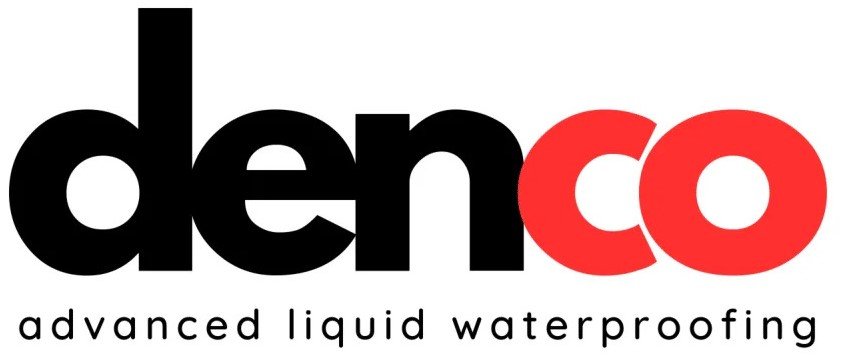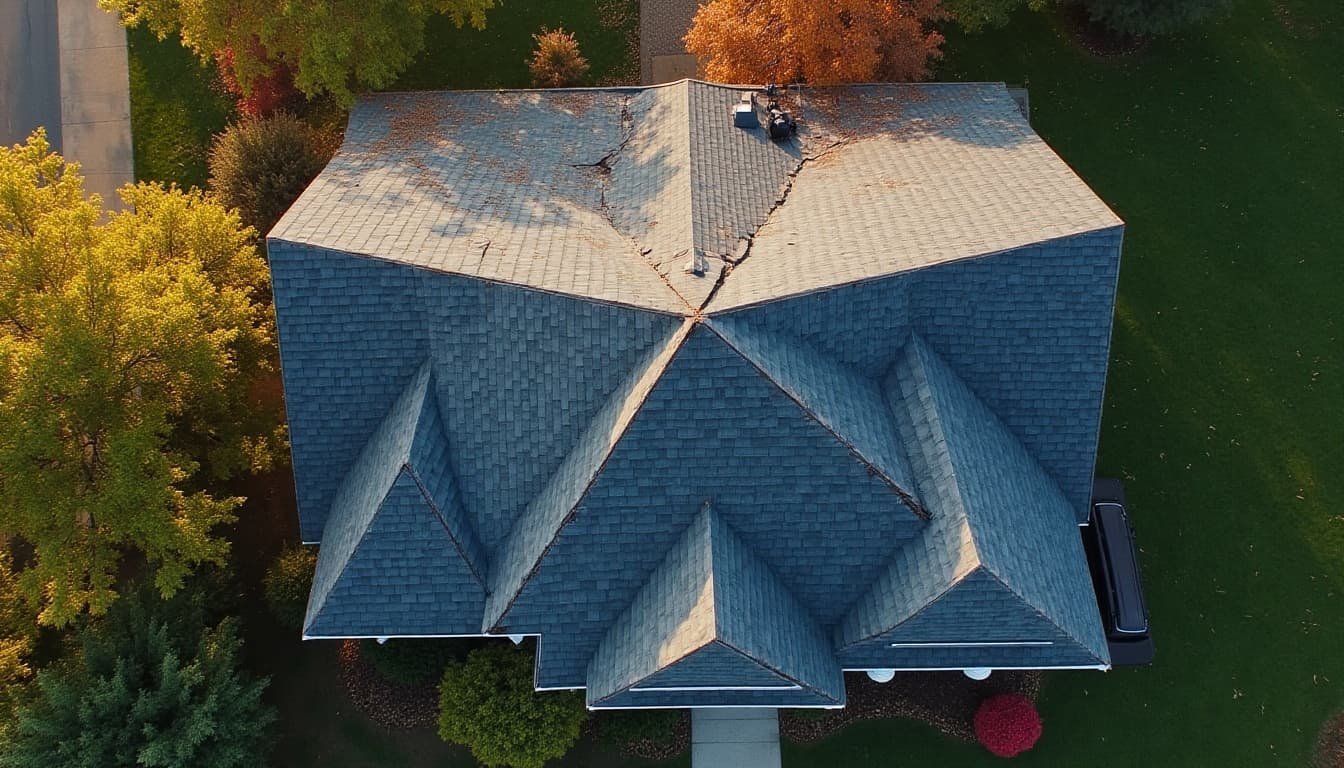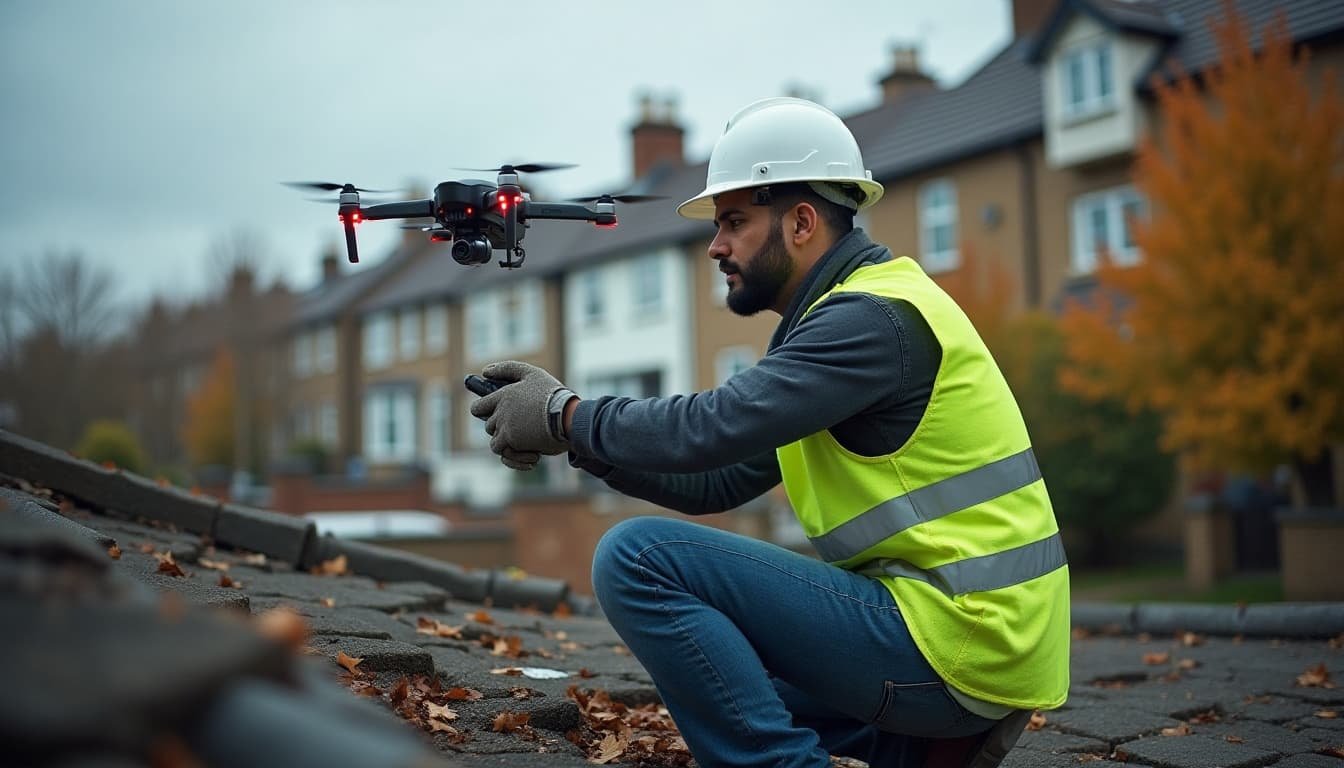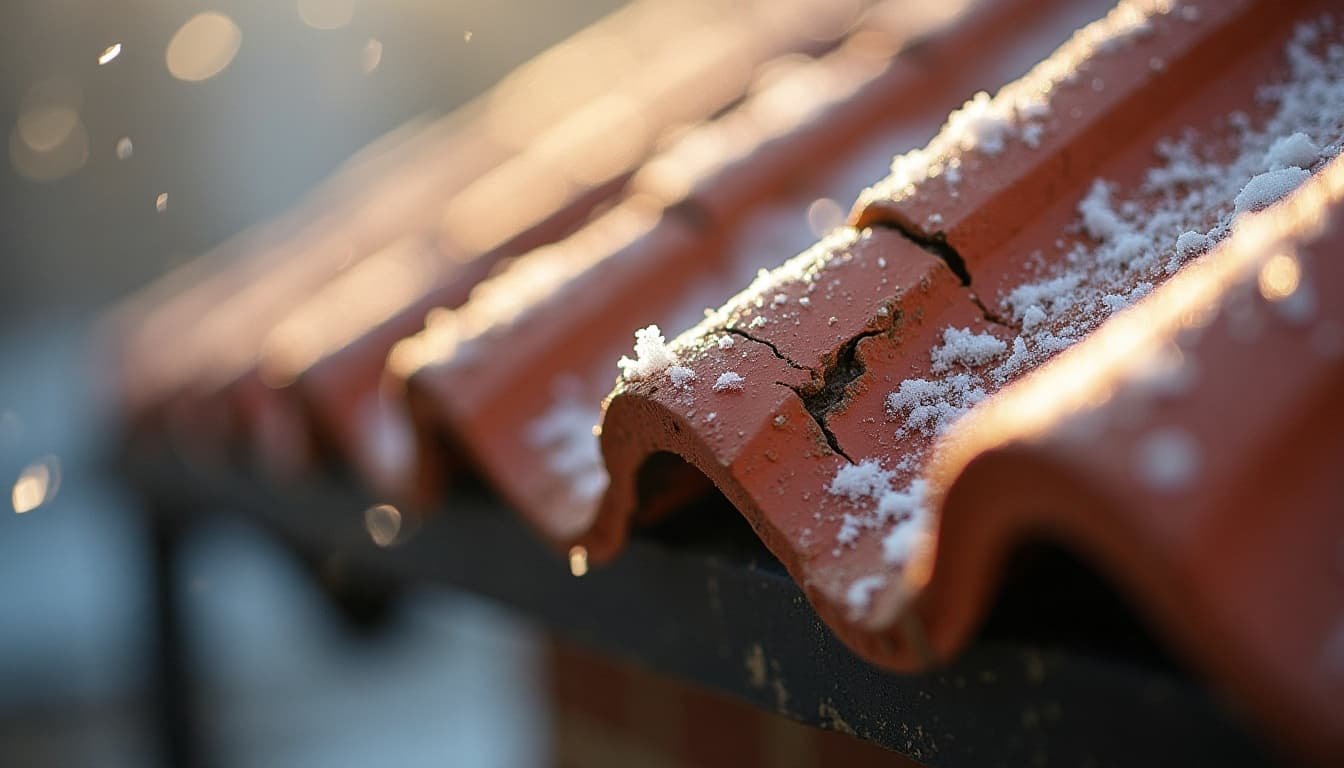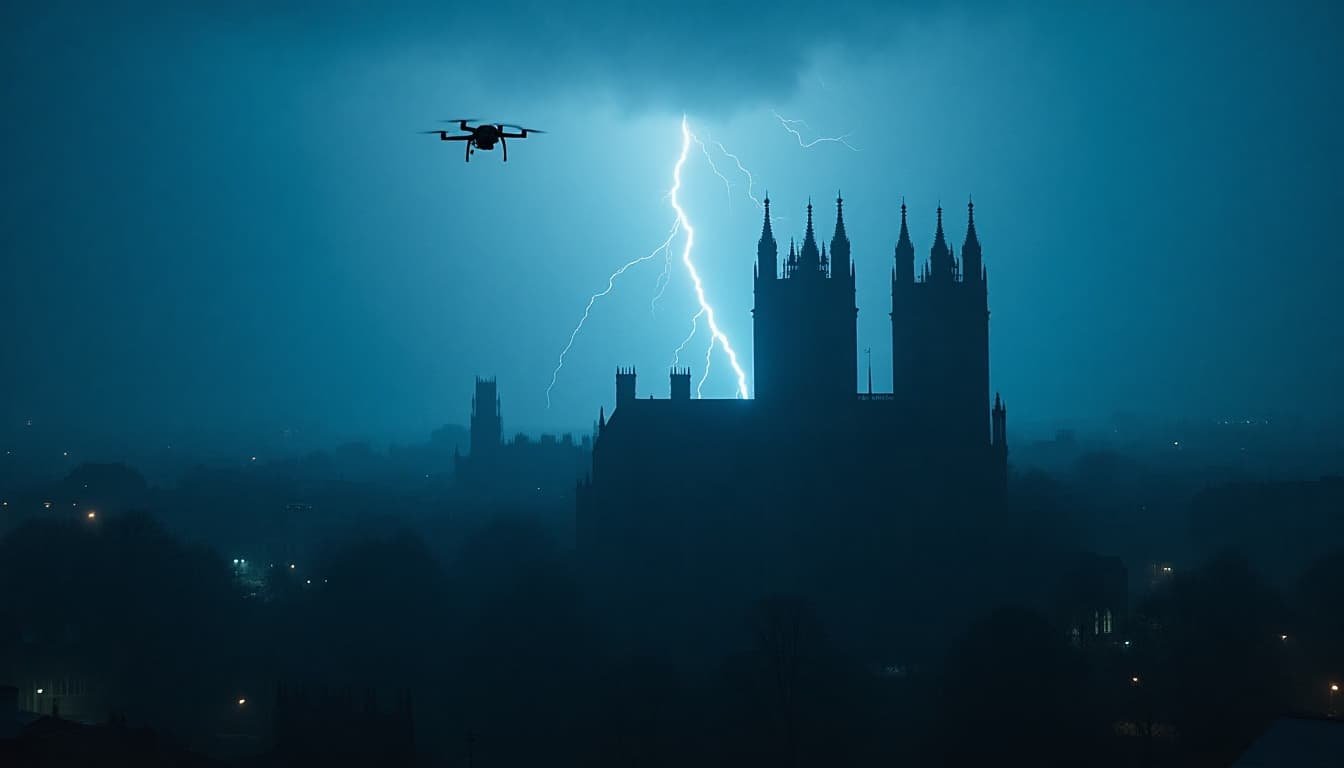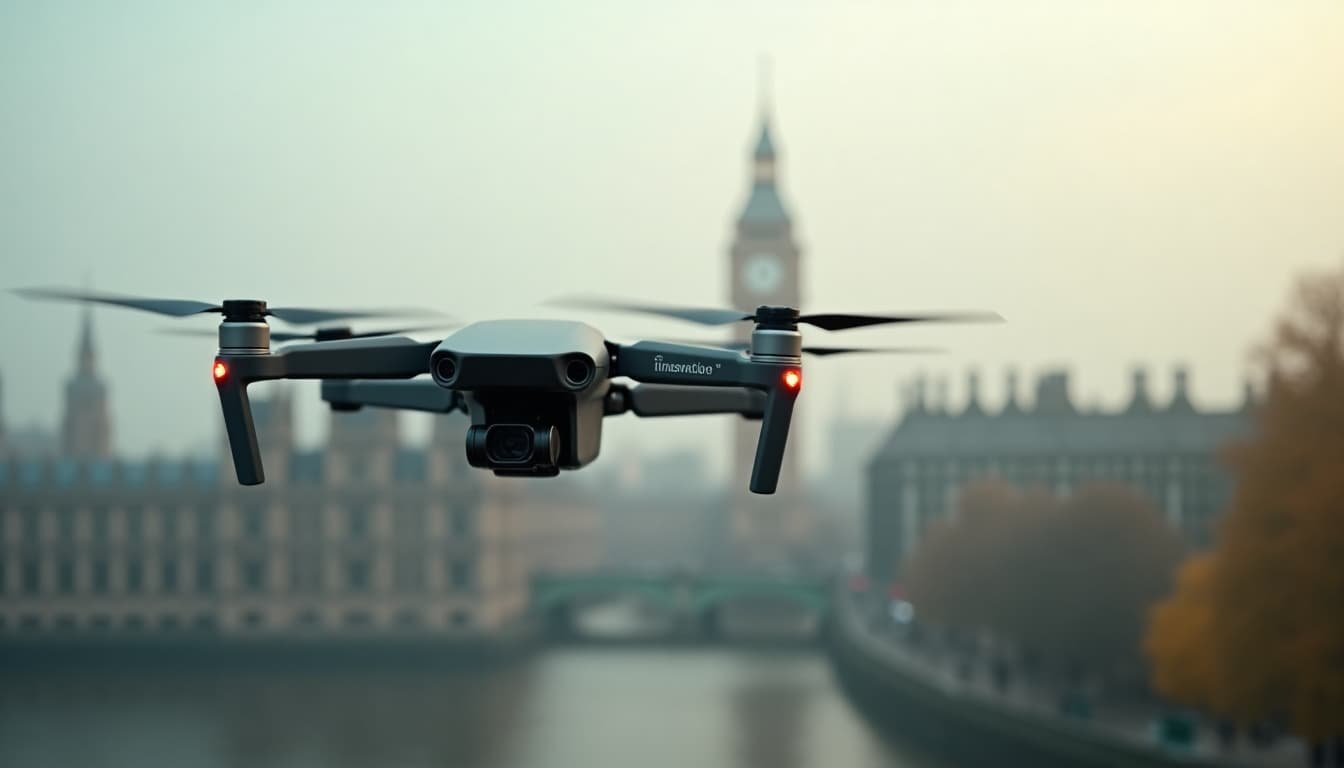
Contents
Our Services
Liquid waterproofing
What Client Say
I would just like to say a big thank you to the Denco team for the work they recently did on our roof, such a great finish. They repaired the old asphalt and covered it with a lovely new grey liquid coating. Leaving the premises very clean and tidy, we are so pleased with the end result. Thank you again guys.
Thank you to Lee and his colleagues from Denco Waterproofing for the outstanding job that they have completed on our balcony. Very impressed with there standard of workmanship and will definitely be having them back to replace the flat roof on our extension soon.
Great work by the Denco Waterproofing lads, very hard working, extremely tidy and the attention to detail was top class. Well done job all round. Many thanks.
Need help?
Don't hesitate to contact us
Send a message
Yes, drones can detect roof cracks. These flying devices use advanced cameras and sensors.
They capture detailed images, revealing hidden roof issues. Roof maintenance is crucial for home safety. Traditional inspections involve climbing ladders and walking on roofs. This can be dangerous and time-consuming. Drones offer a safer and efficient alternative. Equipped with high-resolution cameras, they provide a bird’s-eye view of your roof.
This allows homeowners to identify cracks and other potential problems early. Early detection prevents costly repairs down the road. Using drones for roof inspections is gaining popularity. Their ability to assess hard-to-reach areas is impressive. Curious about how drones accomplish this task? Let’s explore how these gadgets transform roof inspections.
Drones In Roof Inspection
Roof inspections are crucial for maintaining the safety and durability of any building. Traditionally, these inspections required manual checks, which could be time-consuming and risky. Enter drones. Drones are transforming the way roofs are inspected. Drones have advanced cameras and sensors. They can quickly spot roof cracks and other structural problems. This modern method boosts safety and gives clear insights into roof conditions.
Benefits Of Drones
Using drones for roof inspections offers numerous advantages. Safety is a primary benefit. Inspectors no longer need to climb ladders and walk on precarious surfaces. Drones can easily fly over roofs, reducing the risks of falls and injuries. Moreover, drones offer a cost-effective solution. Manual inspections can be labour-intensive and expensive. Drones, by contrast, are quick and economical.
- Enhanced safety for inspectors
- Time-saving process
- Cost-effective compared to manual inspections
- Access to hard-to-reach areas
Another significant advantage is comprehensive data collection. Drones capture high-resolution images and videos, providing detailed views of roof conditions. Real-time data helps in making informed decisions. Additionally, drones can cover large areas in a short time, ensuring thorough inspections.
Technological Advancements
Drones have evolved rapidly, thanks to technological advancements. Modern drones come equipped with state-of-the-art features that enhance their inspection capabilities. Camera technology is one of the biggest breakthroughs. Drones now have cameras that can capture stunningly clear images and videos, even in challenging weather conditions.
Sensor technology is another area where drones excel. Advanced sensors can detect roof cracks, leaks, and other anomalies with precision. These sensors can identify problems that might be invisible to the naked eye. This advanced sensing technology ensures that potential issues are detected early, preventing costly repairs.
- High-resolution cameras for detailed imagery
- Infrared sensors for detecting heat loss and leaks
- GPS systems for accurate positioning
- AI integration for automated analysis
Artificial intelligence (AI) integration is changing the landscape of drone inspections. With AI, drones can analyse data on the go, offering real-time insights. This reduces the need for manual data processing and speeds up decision-making. GPS technology ensures precise navigation, allowing drones to cover every inch of a roof efficiently.
Types Of Drones Used
Drones have become a powerful tool in various industries. One of their key applications is in roof inspections. Can drones detect roof cracks? Yes, they can, and they do so efficiently. Various drones are used for this task. Each type has its own features and benefits. We will look at the types of drones used to find roof cracks. We’ll focus on what they can do and which ones fit different inspection needs.
Fixed-wing Drones
Fixed-wing drones are built like small aeroplanes. They have a rigid wing structure, which gives them the ability to glide through the air. This type of drone is known for covering large areas quickly. They are ideal for inspecting extensive roof spaces, like those found on factories or warehouses.
Key Features of Fixed-Wing Drones:
- Long Flight Time: Can stay airborne for over an hour.
- Large Coverage Area: Suitable for inspecting large roofs.
- High Speed: Capable of flying at faster speeds compared to other drones.
When to Use Fixed-Wing Drones:
| Scenario | Advantage |
| Large industrial roofs | Quick and efficient coverage |
| Rural areas | Longer flight range |
These drones are equipped with high-resolution cameras. This helps in capturing detailed images to spot even small cracks on the roof. Yet, landing requires some skill, as they need a runway or open space for a safe descent.
Quadcopters
Quadcopters are the most popular type of drones for roof inspections. They have four rotors, which give them stability and control in flight. Quadcopters are perfect for inspecting smaller and more complex roof structures, such as residential homes.
Key Features of Quadcopters:
- Vertical Takeoff and Landing: Can hover in place and manoeuvre in tight spaces.
- High Manoeuvrability: Excellent for navigating around obstacles.
- Versatile Camera Options: Equipped with thermal and HD cameras for detailed inspections.
Quadcopters are user-friendly, making them accessible for operators with varying skill levels. Their ability to hover allows for detailed inspections of specific areas. This ensures that no crack goes unnoticed, making them a preferred choice for many.
Detection Technologies
Detecting roof cracks is essential to maintaining the integrity of a building. Drones have emerged as a powerful tool in identifying these issues. They offer a bird’s-eye view, which is difficult to achieve through traditional methods. Utilising advanced detection technologies, drones can pinpoint roof defects with accuracy. This enhances safety and reduces inspection costs. We will look at two main technologies that help drones find roof cracks.
Infrared Imaging
Infrared imaging is a standout technology in drone inspections. It works by capturing thermal variations on a roof’s surface. Cracks and leaks often show temperature differences. These differences are visible in infrared images. This makes infrared imaging a reliable method for detecting hidden roof issues. Here are some key advantages:
- Non-invasive: No need for physical contact with the roof.
- Quick detection: Rapid assessment of large areas.
- High accuracy: Identifies problems not visible to the naked eye.
Consider this table comparing infrared imaging with traditional methods:
| Infrared Imaging | Traditional Methods |
| Non-invasive | Requires physical access |
| Fast analysis | Time-consuming |
| Detects hidden issues | Limited to visible problems |
Infrared imaging is invaluable in spotting cracks early. This prevents further damage and saves on repair costs.
High-resolution Cameras
High-resolution cameras are another critical technology for drones. They capture detailed images of the roof surface. These cameras can zoom in on specific areas to identify small cracks and defects. High-resolution imaging is beneficial for several reasons:
- Detailed visuals: Provide clear images for accurate analysis.
- Wide coverage: Inspects large areas efficiently.
- Real-time monitoring: Enables quick assessments during flight.
Below is an ordered list of steps in using high-resolution cameras:
- Set up the drone with the camera.
- Program the flight path.
- Conduct the inspection.
- Analyse the captured images.
High-resolution cameras help identify both minor and major roof issues. This ensures timely intervention and maintenance. Combining infrared imaging with high-resolution cameras offers a comprehensive approach to roof inspections.
Identifying Roof Cracks
With advanced technology, drones have become essential tools in various industries. One intriguing application is their ability to detect roof cracks. These flying devices offer a safe and efficient way to inspect roofs. They help homeowners and professionals find potential issues easily. Drones can spot roof cracks. This helps keep a building strong and lasting.
Visual Indicators
Visual detection is one of the primary ways drones identify roof cracks. Equipped with high-resolution cameras, drones can capture detailed images of the roof surface. These images help in spotting obvious signs of damage. Here are some common visual indicators:
- Discolouration: Areas that appear darker or lighter than the surrounding material may signal underlying issues.
- Debris Accumulation: Piles of leaves or dirt could hide cracks beneath them.
- Surface Irregularities: Uneven surfaces may indicate structural problems.
Using drones to capture images provides a bird’s-eye view, covering every corner of the roof. This method ensures no areas are missed during the inspection. Drones can also zoom in on suspicious spots, allowing for closer examination.
Structural Analysis
Beyond visual cues, drones use technology for structural analysis. They can be equipped with sensors that detect changes in material density and temperature. These sensors help identify cracks not visible to the naked eye. Key aspects of this analysis include:
- Thermal Imaging: Detects temperature variations indicating moisture or air leaks.
- Infrared Sensors: Reveal cracks and gaps by analysing heat patterns.
- 3D Modelling: Provides a detailed structural map of the roof.
Thermal imaging is particularly useful in spotting areas where heat escapes, a common sign of cracks. Infrared sensors enhance this capability by further detailing the roof’s condition.
The creation of 3D models using drone data allows for comprehensive analysis. These models show the roof’s structure in detail, making it easier to pinpoint areas needing repair.
To summarise, structural analysis tools enable drones to detect even the smallest cracks, ensuring thorough inspections.
Limitations Of Drone Inspections
Drones are becoming popular tools for inspecting roofs. They offer safety and efficiency. These flying devices can capture high-resolution images and detect roof cracks. Yet, they aren’t perfect. There are limitations to drone inspections. Understanding these limits helps manage expectations. It ensures better planning and decision-making. Let’s explore some key challenges faced during drone roof inspections.
Weather Constraints
Weather plays a big role in drone operations. Poor weather can hinder inspections. Windy conditions affect drone stability. Strong winds make it hard to capture clear images. Rain and snow can damage the drone’s equipment. Visibility drops in foggy or cloudy weather. This makes it tough to gather accurate data. Drones need clear skies for optimal performance.
Here are some common weather-related issues:
- Wind: High speeds can disrupt navigation and image clarity.
- Rain and Snow: Moisture can harm sensitive components.
- Fog: Reduces visibility, leading to incomplete inspections.
- Extreme Temperatures: Cold or heat can affect battery life.
Weather limitations can delay inspections. It’s crucial to choose the right time for drone use. Planning inspections on clear days increases success rates.
Technical Challenges
Drones face technical hurdles during roof inspections. Camera resolution affects the quality of images. Low-resolution cameras might miss fine cracks. Battery life limits flight time. Short battery life results in incomplete inspections. GPS signals can be weak in certain areas. Weak signals can cause navigation problems. Software issues can lead to data loss.
Below are some technical challenges:
| Challenge | Impact |
| Camera Resolution | Blurry images, missed cracks |
| Battery Life | Limited flight time, incomplete data |
| GPS Signal | Navigation errors, inaccurate positioning |
| Software Issues | Data loss, malfunction |
Technical challenges require attention and preparation. Updating software and choosing drones with longer battery life can help. Ensuring high camera resolution is vital. Addressing these issues enhances drone inspection effectiveness.
Comparative Methods
Detecting roof cracks early can save homeowners from costly repairs. Drones have emerged as a modern tool for this purpose. Comparing drones with traditional inspection methods reveals distinct advantages and challenges. Let’s explore these comparative methods to understand how drones measure up.
Traditional Inspection Methods
Traditional roof inspections often involve manual labour and careful scrutiny. Inspectors climb ladders and walk across roofs to check for damage. This method has been reliable for decades, but it comes with certain drawbacks.
- Safety Risks: Inspectors face the danger of falls, especially on steep or slippery roofs.
- Time Consumption: Each inspection can take several hours, depending on the roof’s size and complexity.
- Accessibility Issues: Some areas might be hard to reach, leading to incomplete inspections.
- Subjectivity: Results can vary depending on the inspector’s experience and eyesight.
| Aspect | Traditional | Drone |
| Safety | High Risk | Low Risk |
| Time | Several Hours | Less than an Hour |
| Coverage | Limited | Comprehensive |
Cost Analysis
Cost is a major consideration for roof inspections. Traditional methods often incur significant expenses, especially for larger buildings. Labour costs, equipment, and potential damages add to the total.
- Labour Fees: Paying skilled inspectors can be costly.
- Equipment Rental: Ladders, safety gear, and other tools may need to be rented.
- Insurance: Coverage for potential accidents increases overall costs.
Drones offer a different cost structure. Initial expenses include purchasing or renting the drone. Over time, the cost per inspection can be lower.
- Reduced Labour Costs: Fewer people are needed to operate a drone.
- Lower Insurance: Reduced risk means lower insurance premiums.
- Equipment Maintenance: Drones require less maintenance compared to traditional tools.
Despite the upfront investment, drones can become a cost-effective solution over time.
Case Studies
Using drones to detect roof cracks is becoming a popular method. They offer a unique perspective and can cover large areas quickly. To understand their effectiveness, exploring case studies provides real-world insights. These examples show how drones find roof problems. They also share lessons learned from inspections.
Successful Inspections
Several case studies highlight the success of drones in detecting roof cracks. In one instance, a large commercial building underwent drone inspection. The drone’s high-resolution camera captured detailed images of the roof surface. This resulted in identifying minor cracks and potential leaks:
- Cost-effective solution: Reduced inspection costs by 30% compared to manual methods.
- Time efficiency: Completed the inspection in under two hours.
- Safety improvement: Eliminated the need for workers to climb onto the roof.
Another study focused on residential properties. Drones equipped with thermal imaging detected heat patterns. These patterns indicated hidden cracks and insulation issues. The following table summarises key findings:
| Property Type | Detection Method | Results |
| Commercial | High-resolution imaging | Minor cracks, potential leaks |
| Residential | Thermal imaging | Hidden cracks, insulation issues |
These successful inspections demonstrate the drone’s ability to provide detailed and actionable roof assessments.
Lessons Learned
Drone inspections offer valuable lessons. One crucial insight is the importance of operator skill. Skilled operators ensure accurate data collection and interpretation. Training programs for drone pilots have become essential.
Another lesson is technology adaptation. Drones must be equipped with suitable cameras and sensors. Each roof type may require different detection technologies:
- High-resolution cameras for detailed imagery.
- Thermal sensors for detecting heat anomalies.
Weather conditions can impact inspections, too. Wind and rain may affect drone stability and image quality. Planning inspections during calm weather improves results.
Data management is another critical aspect. Efficient storage and analysis of collected data enhance the inspection process. Using software tools to process images and reports increases accuracy.
These lessons help refine drone inspection strategies, making them a reliable method for roof crack detection.
Future Of Drone Inspections
Imagine a future where roof inspections are quick, safe, and accurate. Drones are at the forefront of this transformation. They offer an innovative way to detect roof cracks without risking human safety. Drones use cameras and sensors to find issues that traditional inspections may overlook. This technology could redefine how roofs are maintained and repaired. Let’s explore the future of drone inspections.
Emerging Technologies
Drones equipped with cutting-edge technology are becoming a vital part of roof inspections. They come with high-resolution cameras and advanced sensors. These tools help in capturing detailed images of roofs. Infrared sensors detect heat variations which might indicate cracks or leaks. This data can be analysed to understand the condition of the roof.
Some drones use artificial intelligence to analyse images. AI can identify patterns and spot potential issues faster than manual inspections. This technology saves time and increases accuracy. Let’s look at some key features of these emerging technologies:
- High-resolution cameras: Capture detailed images for analysis.
- Infrared sensors: Detect heat variations indicating possible leaks.
- AI analysis: Automates the detection of cracks and other issues.
These technologies make drones an essential tool in modern roof inspections. They offer a safer and more efficient method to ensure roof integrity.
Industry Trends
The drone inspection industry is growing rapidly. More companies are adopting drones for roof inspections. This trend is driven by the need for safer and more accurate inspections. Drones reduce the risk of accidents during roof checks. They also provide quick and detailed reports.
Several industries are embracing drone technology:
- Construction: Drones inspect roofs during and after construction.
- Real Estate: They provide detailed roof assessments for property buyers.
- Insurance: Drones help assess roof damage for claims.
As drones become more common, their technology will continue to improve. This will lead to faster and more reliable inspections. The industry is also seeing advancements in drone software. Better software means easier data analysis and reporting. This trend is set to shape the future of roof inspections significantly.
Reach out to our team for support or inquiries about whether Can Drones Detect Roof Cracks?
Drones are a smart way to check for roof cracks. They fly high and take clear pictures of your roof. This helps find problems fast. No ladders are needed, so it’s much safer and easier.
Drone technology is very good. It gives clear and correct results. This helps homeowners save time and money.
Checking your roof often can stop big problems later. That’s why using a drone is a smart idea. Many people find drones helpful for roof care. They make roof checks simple and safe.
At Bell Asphalt Co., we use drones to help you take care of your roof. It’s quick, safe, and smart!
Want to check your roof the easy way?
Contact Bell Asphalt Co. today! We’re here to help keep your roof in great shape.
All You Need to Know
Can I Use A Drone To Inspect A Roof?
Yes, you can use a drone to inspect a roof. Drones provide a safe and efficient way to capture detailed images. Ensure compliance with local regulations and have the necessary permissions. This method reduces risks associated with manual inspections and offers high-resolution visuals to assess roof conditions accurately.
How Much Does It Cost For A Drone Roof Inspection?
Drone roof inspections typically cost between £150 and £400. Prices vary based on location and roof size. Some companies offer package deals. Compare providers for the best rates. Always ensure the drone operator is certified and insured.
Can Drones See Through Roofs?
Drones cannot see through roofs using standard cameras. They capture external images and videos. Specialised sensors, like thermal imaging, can detect heat patterns and leaks. These sensors provide limited insight but don’t offer clear views through solid surfaces. Privacy remains protected, as drones don’t penetrate solid structures directly.
Can Insurance Adjusters Use Drones To Inspect Roofs?
Yes, insurance adjusters can use drones to inspect roofs. Drones provide a safe, efficient way to assess damage. They capture high-quality images and videos, reducing the need for manual inspections. This technology helps adjusters make accurate claims decisions while minimising risks associated with climbing ladders or walking on roofs.
